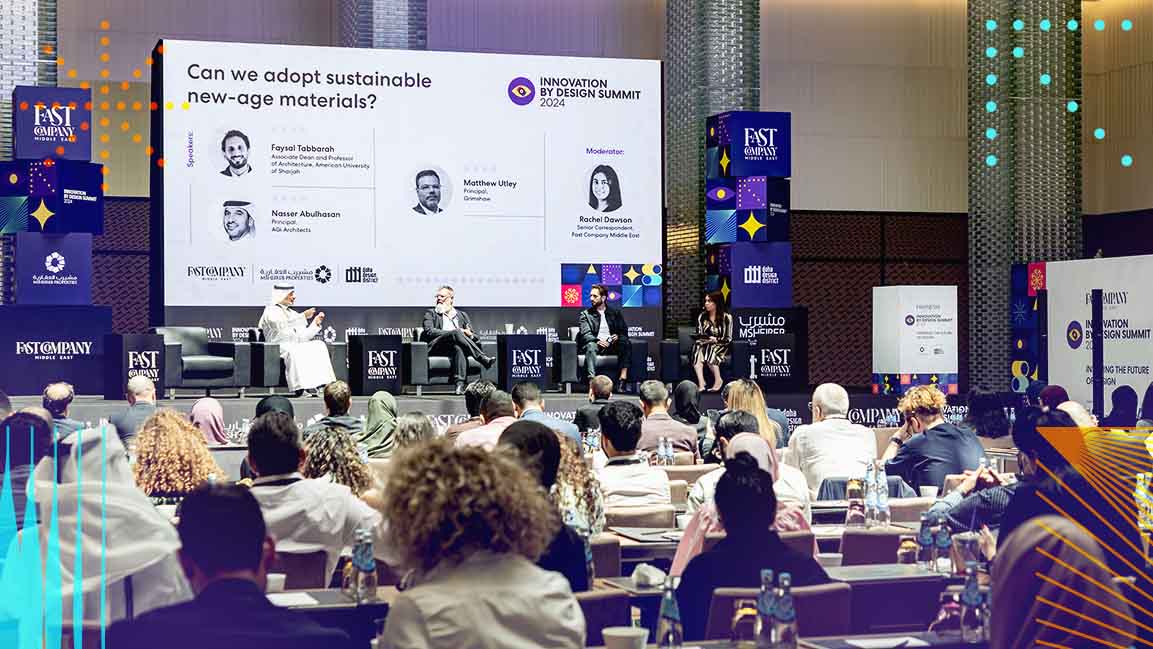- | 8:00 am
A day in the life of a chief sustainability officer: Q&A with Microsoft’s Melanie Nakagawa
What does it look like to work on climate change full time?

As a growing number of people decide to switch careers to work on climate change, we’re running a series of interviews with people in climate-related jobs about their day-to-day work. For this interview, we spoke with Melanie Nakagawa, Microsoft’s new chief sustainability officer.
Fast Company: Before you came to Microsoft, you were working on climate and energy at the White House, and you had a variety of different roles earlier, from being a diplomat to an investor. How did you first get into this space?
Melanie Nakagawa: I won’t go back into the Wayback Machine. But the short story is, I started off as a long-distance runner and just naturally loved being outdoors and outside. And then you overlay that with what I learned in school—I started learning more about what was happening to our planet, the scientific reports that were coming out, and the discussions around climate change.
FC: For people who haven’t worked in corporate sustainability before, can you give an example of what a typical day looks like?
MN: There’s a diversity of issues that cross your desk on any given day. I work out of Seattle, and we have a policy team that sits in Washington, D.C., so by the time I wake up, there are emails in my inbox about policy—things that are going on in Washington, regulatory work, some really interesting developments that we’re engaged in regarding transmission or clean power projects.
So, we start off with policy in the morning, and then start to think about the progress we’re making toward our operational commitments. Microsoft is one of the largest buyers of carbon removal today. [I could have] a conversation with some of my team members about the latest carbon-removal purchases that we’re looking at, and then later, we could be talking about water. We also invest in water replenishment, so [it could be]: What do you think about this water-replenishment project? Later in the day, it could be [talking to] the employee sustainability community about Microsoft’s journey on sustainability, to make sure that as many people across the company who want to be working on sustainability can do so.
FC: You’re obviously working on many things at Microsoft. But can you share just one example of a climate-related project that excites you?
MN: A project right now that excites me is what Microsoft is doing to invest in innovation. A few years ago, Microsoft started a fund called the Climate Innovation Fund. It’s focused on investing in innovative-technology companies that both help deliver a strong climate impact, but also could address our own operational commitments to be carbon negative, water positive, and zero waste by 2030. So, Microsoft committed $1 billion to the Climate Innovation Fund. It’s really showcasing innovation in climate solutions. That creates a lot of optimism for somebody working in this space.
FC: When you’re thinking about what companies you might support, are there certain types of technology that you think are most needed? Where are the gaps that you see in what’s available now?
MN: We’re looking in the low-carbon-material space, in particular. The built environment is a significant source of global emissions. And so whatever we can do to be able to build our infrastructure in a lower-carbon way—with less waste, less water consumption, just less environmental degradation from the building materials we use—that’s really important. Long-duration storage is a really exciting area of innovation. We have incredible renewable energy resources coming online. But when the sun’s not shining and the winds aren’t blowing, you also need storage for that power.
FC: For someone who aspires to work as a sustainability director, do you have any advice? How can someone begin to build the skills that are needed to work in this area?
MN: I’d say there’s no one set of skills that will make you a strong person in sustainability. There’s a wide range of jobs requiring a range of experiences and skill sets to work in sustainability. Consider it a Swiss Army knife of sorts. Even on my team alone, we’ve got everything from a project manager to people with multiple PhDs in environmental science to people that have law degrees. There really is no one-size-fits-all background for sustainability jobs.
FC: Microsoft also wants to help more people develop sustainability skills, right?
MN: Yes, definitely. In November of last year, Microsoft published a report called Closing the Sustainability Skills Gap. It’s really an important underpinning to where we are—the need to urgently train and skill the future workforce to power the global-sustainability transformation. As I said, it’s not one size fits all. But that being said, you’re seeing more and more need across the diverse spectrum: people sitting in the CFO’s office with a business degree understanding the role of climate risk and financial calculations, to people who have to do carbon reporting and understanding energy demand and energy growth, to those who focus on adaptation and resilience. Environmental scientists and engineers who really understand watersheds, that’s a key part of this as well.
There was a LinkedIn jobs report from last year as well that said sustainability jobs grew at a rate of 8% between 2015 and 2022, while the talent pool only grew 6%. There’s really a gap in the needs to fill sustainability jobs.
FC: Climate research and technology is continually changing. How do you keep up with the flow of information?
MN: I have an incredible team of people who are constantly scanning and watching the news of the day and technology breakthroughs. We have an incredible climate-science team at Microsoft. We obviously have a policy team, and they’re globally located and getting a good scan of the world on policy changes and updates. Most recently, it has been the moves in Europe around corporate sustainability-risk disclosures. We have a business- and a solutions-focused team within sustainability at Microsoft, that works in partnership with others and really has a good pulse on where the latest technology breakthroughs are where the young companies are coming from. It really is a team effort.
FC: In such a large company, how does sustainability get embedded across the entire company beyond your team?
MN: When the [carbon negative] commitment was launched in 2020, it was done by the leadership executives of Microsoft. It was [CEO] Satya Nadella, [CFO] Amy Hood, and [president and vice chair] Brad Smith. They stood behind this commitment. That’s really important—that signaling from the very top of the company about the importance of sustainability. The way it gets embedded across the company is that it starts at the very top, but it also involves a very robust workforce, a volunteer army of people committed to sustainability across the company as well.
FC: Is there a book you’ve read recently that you would recommend?
MN: I was just on a run with a friend and I told her about this book: It’s called The Culture Code by Daniel Coyle. It’s about how you build strong and effective teams. It’s told in a series of stories and vignettes that I found really interesting and powerful. I’m new to this company—I joined just a few months ago. And I think it’s so important how you build a strong team. That’s a key part of how we deliver success.
FC: You’ve touched on this a little already, but what makes you optimistic that the world can address climate change?
MN: I think three things: [First], just seeing all the talent that’s coming into this space. There’s so many people from tech moving into climate tech. There’s some phenomenal CEOs. There are just so many incredibly talented people who are dedicating their life mission to sustainability. How can one not be optimistic when you see just this growing, talented workforce showing us that we can get there?
The second reason I’m optimistic is we started the flywheel of success already. Of course, there are questions around the speed and scale of that flywheel. But there already are successes. You have the world coming together in 2015 to demonstrate our global commitment to the climate challenge. You have large corporations not only making these pledges, but then showing their progress. You see more investment in this space, you see technology breakthroughs.
And then the optimism honestly comes from the technology breakthroughs we don’t even know about. Working at Microsoft and seeing where we are on AI, and the opportunity that AI has for dramatically scaling sustainability wins in this space, really fills me with even more optimism.







































